Beverly Gray's Blog: Beverly in Movieland, page 62
November 19, 2019
Selling Out the Indians at Fort Apache

November, they say, is Native American Heritage Month. So I guess it was appropriate that I chose to watch a John Ford movie from 1948, Fort Apache. This is first film of Ford’s long directing career that shows the hand of screenwriter Frank S. Nugent. Nugent also wrote a number of Ford’s other major films, including She Wore a Yellow Ribbon, The Searchers, and (most delightfully) The Quiet Man. My friend Joseph McBride’s essay on Nugent, whom he calls “The Quiet Man Behind John Ford” made me eager to take a hard look at Fort Apache. It’s a film set in Indian territory, dramatically making use of Ford’s favorite Monument Valley vistas.
McBride’s essay (found in his Two Cheers for Hollywood collection) makes the point that Nugent was a skilled creator of characters. His habit—which I think all aspiring screenwriters would do well to follow—was to create for every major character in the film a very thorough biographical sketch. Not all of the details in this biography (someone’s childhood experiences, education, and so on) would show up in the script he was constructing, but the thoroughness of his understanding would wonderfully flesh out the personalities we saw on screen. Such is the case in Fort Apache, where Henry Fonda plays a man who has his admirable qualities, but is also deeply flawed.
Fonda, known at the time for such sympathetic roles as Young Mr. Lincoln and Tom Joad in Ford’s The Grapes of Wrath, plays in Fort Apache the role of Lt. Colonel Owen Thursday, who’s reporting for duty as the commander of a frontier outpost deep in the heart of a territory where Cochise and his Apaches lurk. He’s a stickler for spit and polish, and there are hints that a demotion during the Civil War has made him eager to prove himself. He’s soon butting heads with Captain Kirby York, the character played by a Ford favorite, John Wayne. York is a rugged Civil War veteran who knows the land and its inhabitants. But despite his leadership qualities, Thursday regards him with contempt.
York brings Thursday the news that Cochise is ready for a powwow to discuss peace. Characteristically, Thursday wants none of that. Determined to grab the glory of a military victory, he uses the planned meet-up with Cochise as an opportunity for a surprise attack by the full regiment. It’s the dirtiest of tricks, but it leads to a brilliantly staged battle sequence in which Thursday and many of his men meet death. There’s an ironic coda, but I don’t want to spoil ALL of the film’s twists.
Clearly, this is not exactly a film about Native Americans. Still, their presence looms large. In Fort Apache, the American military is invading the territory sacred to Cochise and his men. The Cochise we see in the film is the noblest of savages, ready to co-exist peaceably with his American neighbors. Part of the attractiveness of John Wayne’s character is that he respects the Indian point of view.
Typically, Ford has cast such familiar faces as Ward Bond, Guy Kibbee, and Victor McLaglen, who plays a comical Irish character. One odd element is the presence of Shirley Temple, then 20, playing Fonda’s perky young daughter. She’s part of the film’s subplot, opposite her real-life husband, John Agar. Temple is charming in a grown-up part, but Agar (in his first film role) has a stiff screen presence, and makes for a dull romantic lead. So I’d prefer to forget about their soppy romance and focus on the powerful Fonda/Wayne scenes that help this drama come alive.
Published on November 19, 2019 09:15
November 15, 2019
Do or Die: Léon Bing and the Allure of Violence
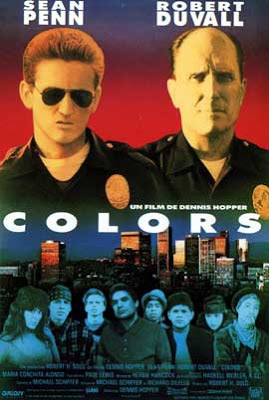
Another day, another shooting rampage. As I write this, folks are recoiling in horror from a school shooting in suburban Los Angeles. But the public anguish won’t last long: these shootings have become so commonplace that no one pays more than momentary attention, even though what was once an inner-city gang phenomenon has evolved into long-wolf attacks in the suburbs. How did this happen, and why? I’m sure Léon Bing has an opinion.
Léon Bing is full of surprises. First of all, she’s female. As a top fashion model—someone who posed on the cover of Time magazine in a Vidal Sassoon haircut and a micro-mini designed by Rudi Gernreich—she should have retired to a life in some opulent penthouse. Instead, Bing turned to journalism, and her first published book was a 1991 best-seller. Called Do or Die, it’s an inside look at life in L.A.’s most notorious street gangs. With courage and no lack of chutzpah, Bing went out and befriended members of the Crips and the Bloods, visiting them in their homes, on their streets, and in prison. Her no-bullshit first-person account of their conversations reveals what poverty, aimlessness, and a desperate need for belonging can do to young men (and women) of color. It’s a solid little book: frank, instructive, and more than a bit frightening.
The gang members about whom Bing writes, though certainly picturesque, do not leap and pirouette down city streets à la West Side Story. They’re tough customers who skip school, deal dope, steal cars, and wreak bloody revenge on their numerous enemies. They also adhere to strict codes of behavior that govern all their interactions with others. They know full well that a simple transgression like walking down the wrong street or wearing the wrong colors can mean death, and that their families are hardly immune from payback.
One thing I picked up from Do or Die is the impact of movies on gang behavior. A young Crip named G-Roc lectured Bing on the impact of a 1988 Hollywood film called Colors, directed by Dennis Hopper and starring Sean Penn and Robert Duvall. Colors has been described this way: “An experienced cop and his rookie partner patrol the streets of East Los Angeles while trying to keep the gang violence under control.” In G-Roc’s terms (and I apologize for his language choices), Colors was an incitement to violence among the young gangsters it intended to portray: “Lemme tell you, girl, that was some dangerous shit in that movie. That shit just fired niggers up. Niggers saw that shit, they went out there just straight for the kill. You know, like no mercy whatsoever for anybody. That shit was just a green light to kill or be killed.” And why was Colorssuch a motivator? Because gang members found it fake, and were determined to show what real gang behavior was all about.
Late in her book, Bing recounts her visit to Monster Kody in Soledad Prison. Kody has been away from the streets long enough to become a kind of philosopher, sorting through the attractions of gangbanging: “It’s a dashing, exciting game of cat and mouse with your own life . . . You do things you’ve seen other people do. You try to get out of your car like Warren Beatty did in Bonnie and Clyde.” When you shoot someone, “it all becomes scenes from movies—you’re doin’ James Cagney and Edward G. Robinson.” So gangbangers in their own way become movie stars. And star-power, alas, now seems to be motivating other young people to seal their reputations through violence.
Published on November 15, 2019 08:58
November 12, 2019
Enbracing Inclusivity, via Final Draft
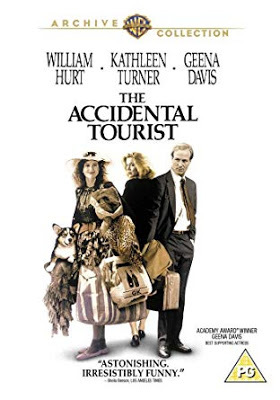 Have you ever tried to write a screenplay on a typewriter? I have, and the results weren’t pretty. As anyone who’s ever seen a movie script knows, it relies on an elaborate network of indented sections, with special margins for dialogue passages and for the key indications of time and place informally known as “slug lines.” The rationale is that a completed screenplay can be used by a film‘s cast and crew as a practical blueprint for what the movie itself should look and sound like. There was a time when movie scripts were indeed tapped out on typewriters, but it requires a master typist to get the basic formatting right. And, of course, a computerized script is extremely helpful when it comes to inputting those tiny changes that filmmaking so often requires.
Have you ever tried to write a screenplay on a typewriter? I have, and the results weren’t pretty. As anyone who’s ever seen a movie script knows, it relies on an elaborate network of indented sections, with special margins for dialogue passages and for the key indications of time and place informally known as “slug lines.” The rationale is that a completed screenplay can be used by a film‘s cast and crew as a practical blueprint for what the movie itself should look and sound like. There was a time when movie scripts were indeed tapped out on typewriters, but it requires a master typist to get the basic formatting right. And, of course, a computerized script is extremely helpful when it comes to inputting those tiny changes that filmmaking so often requires.Which is why most of my screenwriting students use computer software designed to help with the hassles of formatting. The industry leader, year after year, has been Final Draft. It may not be cheap ($249.99, though with many discount options), but Final Draft understands what screenwriters are trying to accomplish. It can’t exactly help you write a good screenplay—that’s largely a matter of your own creative skills—but it can certainly assist you in turning out a screenplay that’s good-looking. And a good-looking script is an absolute necessity when you’re trying to impress the professional readers who quickly reject anything that strikes them as amateurish.
I bring all this up because Final Draft, always trying to serve the needs of the screenwriting community, has just devised a nifty new tool to analyze a screenplay in terms of the extent to which it promotes diversity of gender, race, and ethnicity within its pages. Aware of the growing focus on inclusion within the film industry, Final Draft has now developed—and offered for free with any purchase of Final Draft 11—its so-called Inclusivity Analysis feature. The Inclusivity Analysis allows a writer (or a director or film exec) to easily measure such matters as the number of dialogue lines assigned to women, or to members of the LGBTQ community. If you choose, you can analyze your screenplay in terms of the so-called Bechdel Test, making sure there’s at least one scene in which two women speak about something other than a man. You can see your resulting metrics in an elaborate chart, or by way of some very colorful pie graphs.
Final Draft is not the only software company that provides such a measurement of inclusivity. A recent article in Forbes touts Highland, a competing software program, as both cheaper and easier to use. (It ONLY screens for gender diversity, I'm told.) Final Draft has the advantage of being the industry standard, heavily relied upon throughout Hollywood. It offers great flexibility on what it measures. And it can boast that it was developed in partnership with the respected Geena Davis Institute on Gender in Media, founded by the Oscar-winning actress. As Davis told the New York Times, the new tool “will make it easier for readers, writers and creative execs to more easily use a gender and intersectionality lens when evaluating scripts prior to greenlight, casting and production.”
The question is: will there ever come a day when writers are required to submit their scripts to an inclusivity analysis before they receive the all-important green light? No one believes that movie scripts should be cookie-cutter versions of one another. (Well, maybe in the Marvel Universe, cloning last year’s big hit is considered quite the right thing to do.) But I have too much respect for originality to demand that every story pass a standardized test.
Here's the company promo, along with what the New York Times has to say. Learn more (about discounts, upgrades, etc.) at www.finaldraft.com/contact
Published on November 12, 2019 13:03
November 8, 2019
Sam Shepard: A Blue-Collar Renaissance Man
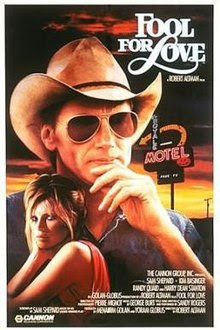
“It's one of the great tragedies of our contemporary life in America, that families fall apart. Almost everybody has that in common.”
This is a quote from Sam Shepard—the late playwright, actor, and all-around cultural icon—who died of amyotrophic lateral sclerosis (aka Lou Gehrig’s disease) in 2017, at the age of 73. I respond to this particular quotation because I’ve just seen a strong stage production of Buried Child, for which Shepard was awarded the Pulitzer Prize for Drama in 1979. Like many of Shepard’s writings for the stage, Buried Child is a raw, tough-minded look at a family in crisis, set in a run-down house somewhere in rural America. It has its darkly comic moments, but its basic mood is grimly ironic. It’s not the kind of play one easily forgets.
I suspect most people who know the Hollywood side of Sam Shepard (including his 26-year relationship with actress Jessica Lange) don’t realize he was the author of 44 plays, many of them award-winners. The grotesque but largely realistic family dramas that mark the highpoint of his career include (along with Buried Child) Curse of the Starving Class, True West, Fool for Love, and A Lie of the Mind. Some of Broadway’s and London’s best actors have taken on roles he has written. He always resisted performing in his own work, but was persuaded by Robert Altman to play a leading part in a 1985 film production of Fool for Love, one that also featured Kim Basinger, Harry Dean Stanton, and Randy Quaid.
Though Shepard thought of himself primarily as a playwright, Hollywood loved his acting chops as well as his craggy Middle-America look. The son of a former military man who took up farming in his later years, Shepard seemed right at home in dramas set amidst cornfields or battlefields. His first big movie role came in 1978, when he played the key role of a lovelorn farmer in Terrence Malick’s Days of Heaven. Five years later, his portrayal of legendary test pilot Chuck Yeager in The Right Stuff nabbed him an Oscar nomination. His later roles ranged from Steel Magnolias to Black Hawk Down, from Hamlet (he played the ghostly father of Ethan Hawke’s title character) to The Assassination of Jesse James by the Coward Robert Ford . One of his last big roles was as the family patriarch in the all-star film production of Tracy Letts’ August: Osage County (2013).
My first brush with a Sam Shepard work came back in the Seventies, when I saw a local production of Shepard’s 1972 play, The Tooth of the Crime. A musical drama set in a vaguely sci-fi future, it involves a lethal battle of weapons and words between an ageing rocker and a dangerous young upstart who seeks to dethrone him. I was never entirely sure what the play was about, but remained mesmerized by its manic energy. What I’m just now learning is that the highly versatile Shepard was also a rock drummer back in the day, a musician who toured sporadically with a psychedelic folk band, The Holy Modal Rounders. He also accompanied Bob Dylan on his Rolling Thunder Revue, charged with coming up with a screenplay for Dylan’s 1978 attempt at filmmaking, Renaldo and Clara. With Dylan he later co-wrote the song “Brownsville Girl,” and he also collaborated both professionally and personally with Patti Smith.
Truly, Shepard’s was a life well lived. I hope that, despite the bleak vision conveyed in his dramas, he had some fun, and smelled a lot of roses.
Published on November 08, 2019 11:00
November 5, 2019
Jojo Rabbit Gets in Der Fuehrer’s Face
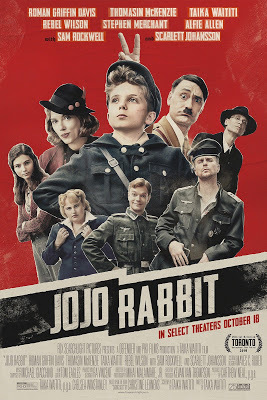
Each generation gets its own Hitler. I’m not speaking here of world geopolitics, although dictators (alas) currently seem to be popping up left and right. Rather, I’m referencing all the films (from Hollywood and elsewhere) that address the Nazi era in line with the stylistics of their own times.
In 1940, when the United States had not yet entered World War II, Charlie Chaplin took it upon himself to caricature the Nazi leader as an inept clown toying with a beachball representing the globe. The film was The Great Dictator, and it was Chaplin’s way of urging the U.S. to move away from neutrality and join the fight against Germany and her allies. Comedy also came into play with Ernst Lubitsch’s witty To Be or Not to Be (1942), in which a troupe of Polish actors (one of them played by Jack Benny) find their own way to work against the Nazi cause, partly by recruiting a Hitler-impersonator from their ranks. Even the Walt Disney company got into the act, through a nine-minute propaganda cartoon, Der Fuehrer’s Face, in which Donald Duck dreams of being a slave to the Hitler war machine. This hilarious little piece, set to a typically catchy, typically crazy Spike Jones ditty, won the Oscar for best animated short in 1943.
The mid-Sixties, a time of growing revolt against the ways of the past, saw funnyman Mel Brooks launch his feature film career by directing The Producers (1967), with its infamous “Springtime for Hitler” production number lampooning Die Fuehrer and his fans. The very Jewish Brooks, who years later remade To Be or Not to Be with himself and wife Anne Bancroft as the central players, has been asked how he can find humor in the portrayal of a leader bent on wiping out Brooks’ own people. His response: that such films as The Producers represent a personal triumph over a cruel and powerful enemy. After all, he and his fellow Jews are alive and well; Hitler is not.
The unexpected hit of 1998, Italy’s Life is Beautiful, dealt with Nazism’s impact on average citizens fancifully, by showing a Jewish father using clowning and imaginative trickery to protect his young son from recognizing the horrors afflicting them both. Audiences mostly found this film heart-wrenching, though critics decried its schmaltz quotient. A huge contrast came by way of Quentin Tarantino’s 2009 action epic, Inglourious Basterds, in which wiping out comically evil Nazis became a thrilling adventure. (Typically, Tarantino rewrote history in order to end with a satisfying bang.)
Which leads me to this year’s Jojo Rabbit, which comes (as unlikely as it seems) from Taika Waititi, a New Zealander who is the offspring of a Maori father and a Jewish mother. In depicting a ten-year-old German boy, circa 1945, who has adopted Adolf Hitler as an imaginary confidante, the film can be called a poignant coming-of-age story. But its most special moments are outrageously comic ones, in which the ineptitude of local Nazi wannabes (vividly played by Sam Rockwell and Rebel Wilson) is put on full display. Waititi himself hilariously portrays the imaginary Adolf as a figment who’s not especially bright, not especially capable, but still sparks the imagination of young Jojo, who’s looking hard for role models. In fact the power of the imagination also courses through my favorite character in the film, the sympathetic but complicated mother played by Scarlett Johansson.
For me, Jojo Rabbit is a welcome addition to the ranks of films that defy Nazi-type ideology by asking us to respect the humanity of those who may not be just like us.
Published on November 05, 2019 13:06
November 1, 2019
How Writers (and Other Hollywood Types) Promote On-Screen Inclusion
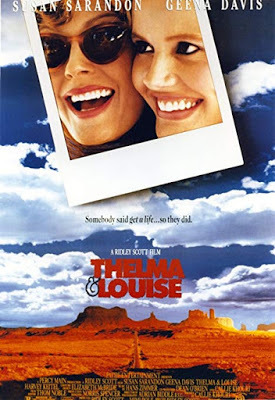
This year’s Governors Awards banquet, hosted by the Academy of Motion Picture Arts and Sciences, gave honorary Oscar statuettes to four Hollywood icons. Director David Lynch took a mere fifteen seconds to thank the academy, and then sat down. Actor Wes Studi, the first Native American to ever earn an Oscar, proudly held his statuette aloft. But the stars of the evening were two female honorees, Italian director Lina Wertmuller and actress/activist Geena Davis, who forcefully urged the Academy to move past gender stereotypes and make Hollywood a more inclusive place.
I wasn’t (alas) invited to that banquet. On that same day, though, I appeared on a panel that expressed similar views. We also went one step further, exploring just how enlightened writers can replace stereotypes with full characterizations that add truth and heft to their stories. As a closing feature of the DTLA Film Festival, held in L.A’s newly cool downtown, our panel introduced an attentive audience to the pressing question of “how to recognize and avoid unconscious bias in your screenwriting.”
Moderator Rosanne Welch, a professor at Stephens College, first asked her six panelists to explain, by way of introduction, where they themselves were coming from. Maria Escobedo and Evette Vargas, who both enjoy a long string of television writing credits, discussed their place in the Latinx community. Screenwriter-producer Hanala Sagal, touted her role as a recovering alcoholic and as the child of Holocaust survivors. Writer-director Donna Bonilla Wheeler saluted her Peruvian mother and Irish father. KalaGuess, representing Final Draft screenwriting software, identified herself as a single parent and as someone who’s struggled with mental challenges. Several panelists noted that they were only children, acutely aware of family dynamics. The point being: that each of us is an amalgam of gender, ethnic, religious, and familial connections. It’s our job as writers to create characters who are no less complicated and no less true.
We all decried easy stereotypes (the Latina spitfire, the loud-mouth Jewish mother, the pathetic single mom). Donna Wheeler mentioned an upcoming film project in which she—attached as a director—successfully campaigned to shift the protagonist’s role from male to female. The result, which she was invited to write herself, deeply enriched the central storyline. (I noted in passing that the role of Ripley in Alien, triumphantly played by Sigourney Weaver, had originally been envisioned as male.) Evette Vargas, who had worked with Welch on Touched by an Angel, told an instructive story about the series, which involves angels played by Della Reese and Roma Downey assuming various human disguises in order to help earthlings in trouble. On one episode, they were pretending to be a wealthy woman and her maid. The assumption in the writer’s room was that Downey would portray the wealthy woman and the African-American Reese would take on the maid’s role. Vargas then made the bold suggestion that the roles be reversed. Everyone was enthusiastic for a moment, then pointed out that the ageing Reese was contractually limited to a three-day work week, which would rule out her playing the meatier part. Vargas, though, persisted, guessing that Reese would be willing to work longer hours to take on the bigger (and less stereotypical) role. She was right.
Beginners are always instructed to “write what you know.” So how do writers avoid limiting themselves to their own perspective on what’s normal? All of us could agree that one way is to have the widest possible range of friends and life experiences. A broad, generous view of the world is key to presenting that world in all its complexity.
The latest version of Final Draft, the industry standard for screenwriting software, now offers an Inclusivity Analysis feature. It allows writers to check on the degree to which their project encompasses the full range of social possibilities. More on that, perhaps, later.
Published on November 01, 2019 13:56
October 29, 2019
Joseph McBride on Screenwriters Who Watched California Go Up in Smoke
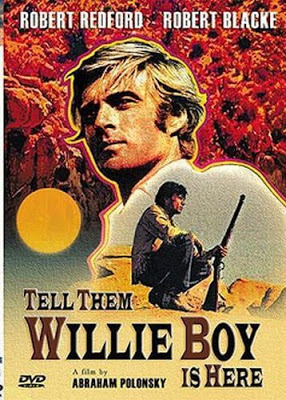
Film historian (and my former Roger Corman colleague) Joseph McBride has the credentials to take a broad view of Hollywood history. I’ve been slowly working my way through Joe’s Two Cheers for Hollywood. It’s a massive 2017 compilation of his many articles about the film industry. As someone who has written movies (like Corman’s Rock ‘n’ Roll High School), worked on movie crews, and reported on movies for major publications, Joe combines an insider’s canny perspective with an intellectual’s smarts.
Right now, all of Southern California seems to be burning. And I’ve just finished the section of Joe’s book that’s dedicated to Hollywood screenwriters who know where the fires start.. I love the fact that writers are given the lead-off position in Two Cheers for Hollywood, because they tend to be the film industry’s most overlooked treasure. (Actors and directors have the glamour jobs, and seem to get most of the public’s attention.) And yet, as screenwriters are fond of reminding us, there can be no filmmaking without them.
Through his varied film industry career, Joe has come to know personally a number of Hollywood writers, including some from the vaunted Golden Age, when the studio system reigned supreme. And he’s done deep research into many others. So he’s the right man to pay tribute to the WGA’s finest, men (and the very occasional woman like Marguerite Roberts) whose words live on in classic films. His entries in this book include profiles of Robert Riskin, who helped Frank Capra perfect what’s been called “the Capra touch,” and Frank S. Nugent, whom he calls “the Quiet Man behind John Ford.” Some of McBride’s subjects lived happy, productive, and lucrative lives, but the bulk of them seemed well aware of the nightmare side of the American dream. Like, for instance, those who ran afoul of the infamous HUAC hearings that led to the blacklisting of some of Hollywood’s best and brightest writers. One of McBride’s own favorite articles, published in 2002 in the Writers Guild magazine, Written By, is called “’A Very Good American’: The Undaunted Artistry of Blacklisted Screenwriter Michael Wilson.” For failure to cooperate with the Committee by naming names of suspected Communists, Wilson was shut out of the industry for fourteen long years. During that span he continued to write, without screen credit, contributing to such major films as Friendly Persuasion (1956), The Bridge on the River Kwai (1957), and Lawrence of Arabia (1962).
Another blacklist victim, Abraham Polonsky, is honored by McBride with two selections. The first is a warm obituary tribute published in 1999 under the title, “Abraham Polonsky: A Very Dangerous Citizen.” The second is a discussion of a Polonsky film (he both wrote and directed) that McBride considers to be a masterpiece: 1969’s Tell Them Willie Boy is Here. This sensitively made action flick, based on a true historic incident from 1909, explores an aspect of early California life of which none of us should be proud. The central thread is the pursuit by Robert Redford, as a local sheriff trying to live up to his father’s legend, of Robert Blake, as a Paiute Indian whose romantic longings lead him into tragedy.
If Polonsky is cynical about the romance of California, so is McBride’s longtime friend Gavin Lambert, whose scripts—like 1965’s Inside Daisy Clover—reveal the nightmare side of California Dreamin’. Lambert, a dapper Englishman fascinated by SoCal and the film industry, published in 1959 a story collection called The Slide Area, suggesting Southern California as a place that is literally slipping away from its residents. Or, of course, going up in smoke.
RIP Robert Evans; In memory of this remarkable showman (in all senses), here's a link to my tribute to the kid who stayed in the picture.
Published on October 29, 2019 12:00
October 25, 2019
Law and Order?: Jack El-Hai’s The Lost Brothers

My colleague Jack El-Hai (former president of the American Society of Journalists and Authors) loves movies, but he makes his living writing books. A serious researcher, he has just published his umpteenth work of historical non-fiction. Jack’s books include The Lobotomist: A Maverick Medical Genius and his Tragic Quest to Rid the World of Mental Illness. There’s also The Nazi and the Psychiatrist, a fascinating inside look at Reich Marshal Herman Göring via his interaction with an American army psychiatrist who was sent to probe Göring’s mental state in the aftermath of World War II. Closer to his Minneapolis home, Jack has written a series of books for the University of Minnesota Press that chronicle various aspects of life in the Upper Midwest. .I haven’t read his Non-Stop: A Turbulent History of Northwest Airlines, nor his coverage of Lost Minnesota: Stories of Vanished Places. But as a parent and an occasional connoisseur of crime fiction, I couldn’t resist his newest effort. It’s called The Lost Brothers: A Family’s Decades-Long Search.
The Lost Brothers is a true Minnesota story, one that began on a chilly afternoon in November, 1951. Three young brothers—aged 8, 6, and 4—left their suburban Minneapolis home to go play in a local park. That was an era we often romanticize as a time when children were free to wander and explore, so long as they were back for dinner. But Kenneth Jr., David, and Danny Klein never came home. Their parents searched, as did the neighbors and an older brother, Gordon, who blamed himself for not going along on the fateful outing. Of course the local police were soon involved too. They stubbornly clung to the theory that the three boys had drowned in the local river, despite the fact that their bodies were never recovered.
Jack has tracked down everything there is to know about this coldest of cold cases. Parents Betty and Kenneth Klein never lost hope that their children would be restored to them, running ads in local papers and annually buying birthday gifts for the missing three. But though their Roman Catholic faith sustained them, and they eventually added four more sons to their family, memories of the lost brothers gradually took their toll. Eldest son Gordon, still alive, continues to be haunted by the loss. And the failure of the police and the FBI to solve the case still rankles local law officers who’ve made it their private mission to find out what happened on that cold November day.
Most disturbing is the fact that the original investigators were so sure of their original conclusion, that the disappearances were the result of a tragic accident, that they barely considered the possibility of foul play. In hindsight, it’s known that some unsavory characters were living in the vicinity of the Klein home, but they have passed from the scene long ago.
If this were a TV show of the Law and Order or CSI ilk, the result would be far different. Someone like Mariska Hargitay, her jaw clenched with determination, would have figured out the missing pieces of the puzzle. Even after all this time, usable DNA evidence would have been recovered, and – following an exciting pursuit – the perp would have been brought to justice. It’s truly a shame that real life doesn’t arrange itself into neat sixty-minute segments, leading to a big, satisfying reveal at the end. Instead, as The Lost Brothers shows us, sometimes what was lost doesn’t get found. But I thank Jack El-Hai for reminding me that life doesn’t always lend itself to tidy endings.
Published on October 25, 2019 10:35
October 22, 2019
Beating the Damn Yankees in Living Color
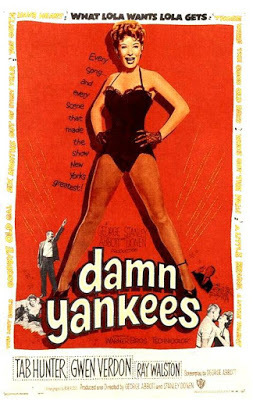
Play ball! I’m glad the Washington (D.C) Nationals are in the 2019 World Series, given that they beat my home team, the L.A. Dodgers, to advance into the National League finals. There’s also the fact that this team, which until 2005 was known as the Montreal Expos, had never before won a pennant. It’s a shame, though, that when the Nationals come to bat this evening, their opponents will be the Houston Astros, not the New York Yankees. The Yankees did come close to making it into the World Series, until the Astros defeated them in game six with a walk-on homerun. I have nothing against the Astros, but the Nationals versus the Yankees would certainly have been poetic justice.
You see, once upon a time there was another D.C. baseball team, the Washington Senators. They were American Leaguers, and year after year their success was stymied by the presence in the league of the formidable New York Yankees. That was the era (circa the 1950s) when the Yankees—the best team money could buy—seemed impossible to beat. So Senators fans annually ate their hearts out. Author Douglass Wallopp, born and bred in Washington, D.C., took matters into his own hands in 1954, publishing a little novel called The Year the Yankees Lost the Pennant. The cover image, which showed a pin-striped Yankee player being hoisted on a pitchfork by a demonic-looking creature, hinted at the novel’s imaginative take on this classic baseball rivalry. Borrowing from Faust and the whole “deal with the devil” meme, the novel establishes that a middle-aged diehard Senators fan makes a pact with the mysterious Mr. Applegate that turns him into a handsome young baseball phenomenon, one capable of singlehandedly winning the pennant for the Senators.
If this novel sounds familiar, it’s because it was quickly turned into a hit 1955 Broadway musical, Damn Yankees. The role of the demonic Mr. Applegate was played by Ray Walston, but what most people remembered was the female lead, a temptress named Lola who shows up to keep the newly-minted Major Leaguer Joe Hardy from straying from his satanic pact. I’ve discovered that the stage role was offered to Hollywood’s Mitzi Gaynor and to French ballerina Zizi Jeanmaire (whom I remember from the first big movie I ever saw, Hans Christian Andersen with Danny Kaye). But it ended up being played by a redheaded dancer, Gwen Verdon. When she met the show’s choreographer, Bob Fosse, sparks flew, both onstage and off. They married in 1960, and their lives and careers were intertwined from that time forward.
Of course the Broadway hit about baseball quickly became a movie. Most of the stage cast was retained, so that little boys (and big ones too) could watch in astonishment as Verdon strutted her stuff with “Whatever Lola Wants, Lola Gets.” Ray Walston, who up to that point had been mostly a stage actor, went on to have a long movie and TV career, ending up as “My Favorite Martian” before passing away two years later in 2001. The one big change from the stage company was that the leading-man part went to Hollywood hunk Tab Hunter, who did no harm in his key role. I should also mention that one of the smaller roles, that of an enthusiastic female fan, was played on both stage and screen by Jean Stapleton, the future Edith Bunker.
I know the cinematic Damn Yankees very well indeed. When it first aired regularly on television, my parents had just purchased a color TV set. Wow! Copper-curled Lola and handsome blond Joe made color TV essential.
Published on October 22, 2019 12:34
October 18, 2019
Rooting Out (and Rooting For) the Parasites
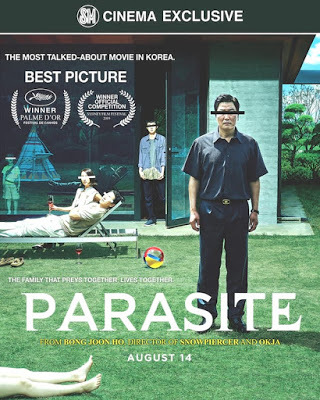
Bong Joon Ho’s Parasite, which picked up the Palme d’Or at this year’s Cannes Film Festival, put me in mind of a trip I made to Seoul, Korea in my long-ago student days. Coming from Tokyo, where families enjoyed a fairly high standard of living, I was mesmerized by the differences I found in Seoul. The city seemed vibrant; its swirl of colors was a welcome change from the much more muted Japanese palette. But amenities that were common in Japan (and basically obligatory in America) in the late 1960s seemed far rarer in Seoul. I spent the night in the home of a schoolgirl my own age, a student at one of Korea’s best universities. Her father was an architect, and I gathered the family was economically comfortable. But the tiny kitchen contained – in place of a refrigerator – a huge jar of kimchee. And there was a fish in the bathtub.
Cut to 2019. Today Seoul (I’m told) is a high-tech wonderland where everybody owns a smart phone, and pizza has apparently replaced kimchee as s mealtime staple. Some Koreans, especially those at the top of tech companies, live very well indeed by anyone’s standards. But there are also plenty of would-be entrepreneurs, far down on the social ladder, who are desperately scrambling to get by. It is in the contrast between Korea’s haves and have-nots that Bong Joon Ho finds his story. Such is the complexity of Parasite that even its title invites conjecture. Who are the true parasites in this film? Are they the members of the Kim family who, having failed at various lowly business ventures, try to rise above their basement existence by dreaming up jobs for themselves in the household of the Parks? Or can the Parks themselves be considered parasites, as they drain the nation dry while pursuing the fabulous lifestyle of the superrich?
The action cuts between the miserable sub-basement of the Kims, where a heavy rain causes raw sewage to swamp the cramped living quarters, and the architect-designed concrete and glass cube in which the Parks live a life totally cut off from the grime of the city. Partly Bong’s film seems a timely comment on what we’ve come to call income inequality. But there’s also something almost heroic, and very funny, about the way the Kims manipulate their social betters, inventing creative ways to make themselves seem essential to people who have money to burn. And yet, it would be wrong to romanticize the Kims as “the deserving poor.” They are not above hurting others of their station to get what they want, and the result is an unlikely but poetically justified twist that turns this outrageous comedy into something far different.
There’s so much going on in this thematically rich film, which comments in passing on Korean politics and on the passion felt by high-status Koreans for all things western, whether these be consumer goods or degrees from the University of Illinois. (Even a yen for things Native American finds its way into the story.) But fundamentally this tale of two households is an arch comment on how money can’t buy familial love. The wealthy Parks, mildly discontented with themselves and with each other, aren’t quite clear on how to raise confident, happy children. The Kims (father, mother, daughter, son) are scoundrels through and through, but their self-confidence rarely falters and their loyalty to one another never flags. If it weren’t for that subterranean secret beneath their employers’ spectacular home, there’s no telling how far they might be able to rise.
Published on October 18, 2019 10:13
Beverly in Movieland
I write twice weekly, covering topics relating to movies, moviemaking, and growing up Hollywood-adjacent. I believe that movies can change lives, and I'm always happy to hear from readers who'd like t
I write twice weekly, covering topics relating to movies, moviemaking, and growing up Hollywood-adjacent. I believe that movies can change lives, and I'm always happy to hear from readers who'd like to discuss that point.
...more
- Beverly Gray's profile
- 10 followers



